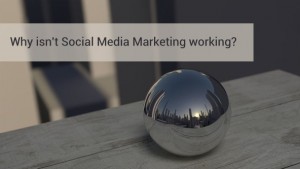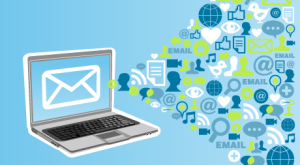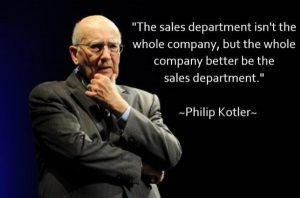
JESHOOTS-com / Pixabay
Many B2B salespeople are used to meeting with their customers face to face; delivering presentations or holding discovery meetings. Their training has been focused around how to hold successful meetings and reading customer body language – only for it all to be thrown up in the area during COVID restrictions that mean that many salespeople now find themselves unable to meet with customers. In recent research about the impact of Coronavirus on B2B sales teams, 25% of salespeople said that not being able to meet with customers was their biggest struggle currently.
So, rather than hoping lockdown restrictions will end anytime soon, it’s important for salespeople to look at how they can excel at selling when they can’t do the traditional sales meeting.
Let’s look at a few key recommendations for excelling at selling when you can’t meet face to face.
Don’t assume that what works face to face will work on a video call
Holding an effective webinar or video call uses different skills to meeting face to face. Some skills such as time management and controlling the agenda for the meeting are the same, but you also need to think about how to express yourself better on a call or webinar. When you meet a customer face to face, you get to see their body language and expressions, and they get to do the same with you – but on a video call, people often sit with their headsets on and don’t think about how important it is to express themselves effectively through their body language and tone.
Also, if you’ve ever recorded yourself talking, you might find that your tone isn’t that expressive – which is completely normal, but it’s something you can work on to bring more tone and variation to your conference calls and webinars. If your voice is the only instrument you’ve got to communicate with your customers, then thinking about how you can best bring some excitement and interest to your webinar will pay dividends.
Refresh your social selling skills
Social selling should be part of your toolkit as a salesperson, but now especially so: after all, it’s going to be where you’re conducting a lot of early-stage prospecting activities, as customers find themselves browsing social media instead of being in meetings or travelling. In fact, research suggests that since the pandemic took hold, social media usage amongst consumers is up by 61% compared to their normal usage levels – so you need to be sharing, commenting, liking and engaging with prospects’ posts online.
Now is a good time to brush up on your LinkedIn etiquette and make sure your profile is up to date. Next, think about what kind of content your prospects want to be engaging with – do you need to make it COVID-relevant? Do your old sales messages still work in light of the pandemic? Or perhaps your messaging needs to shift a little to make it chime with the current climate.
Appreciate that customers might not be in the right mindset to buy
Customers’ buying timescales might be out of the window in light of lockdowns and changing restrictions. Even if the buying timescales for projects remain the same, it’s unlikely that customers are still in the same mindset they were 12 months ago – they might be worrying about their own jobs, about their workload, managing childcare or worrying about their health and their family. In short, everything has changed – so it’s important to remember that when engaging with clients.
Just because you have a deadline you were working to, doesn’t mean it’s stayed the same for the customer. At times like this, we need to be open to hearing our customers’ challenges and understanding their current thinking – and accepting that many of the milestones you might have previously agreed on for your sale, or assumed would take place, may now be out of the window.
Think about how you can add value in a changed world
Just because everything has changed, doesn’t mean that there’s no opportunity to sell. There are opportunities but you need to adapt to the current environment. Importantly, you need to shift your own perspective and think about how you can now add value to customers in this new world and new way of working. What business value or personal value can you bring to them currently?
What are they struggling with right now that you can help them with? What can you switch up to be more useful in the short term to your customers?
If you can support them now, then it will pay dividends for your supplier-buyer relationship in the future.
*
Remember, the current situation is always changing, and one of the top skills salespeople need to have is fluidity and the ability to adapt to changing situations – you do it all the time when your buyer contacts are replaced in an account, or you get a new account list to go after, or a new product to sell. This is just another shift that you’re more than trained to deal with.
Business & Finance Articles on Business 2 Community
(11)
Report Post





